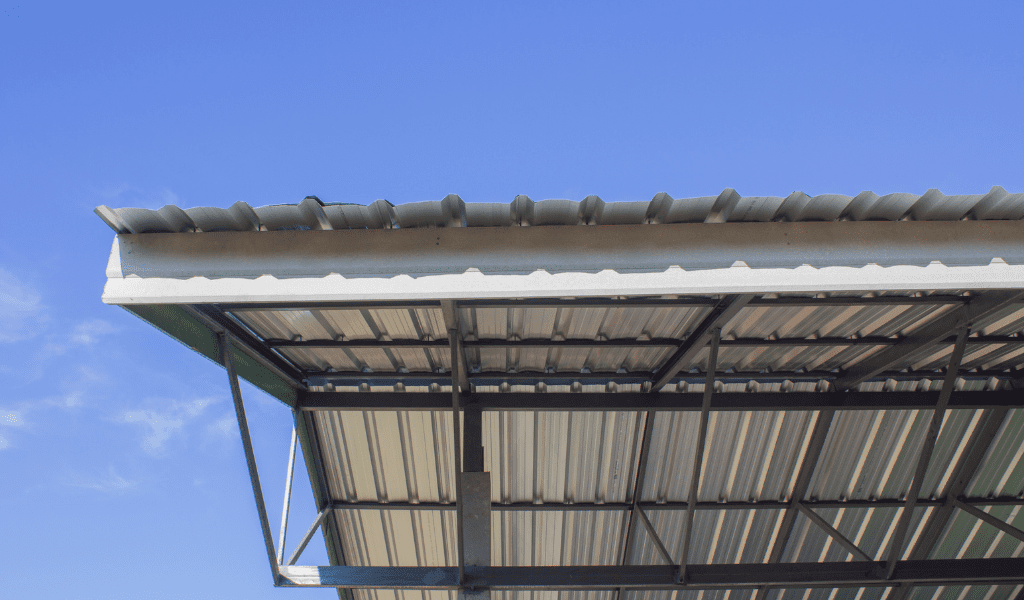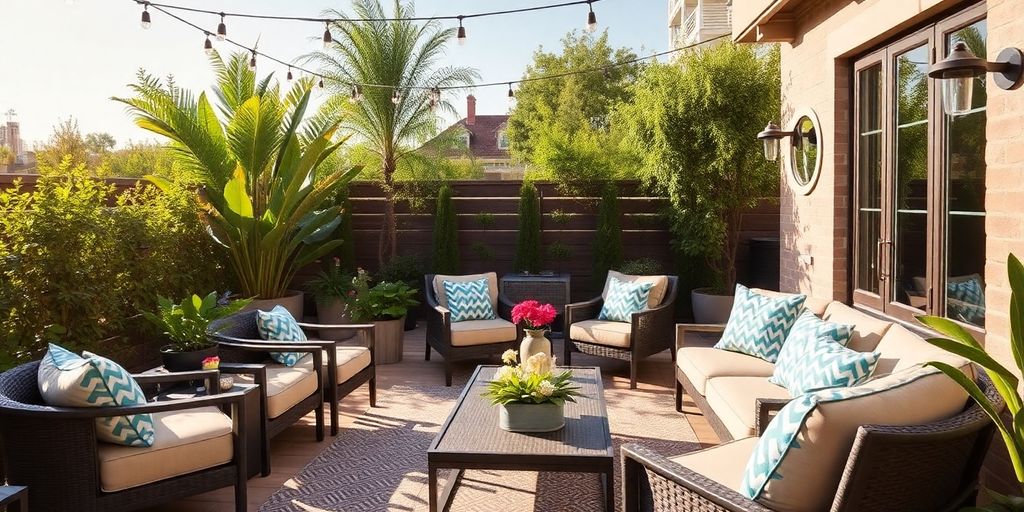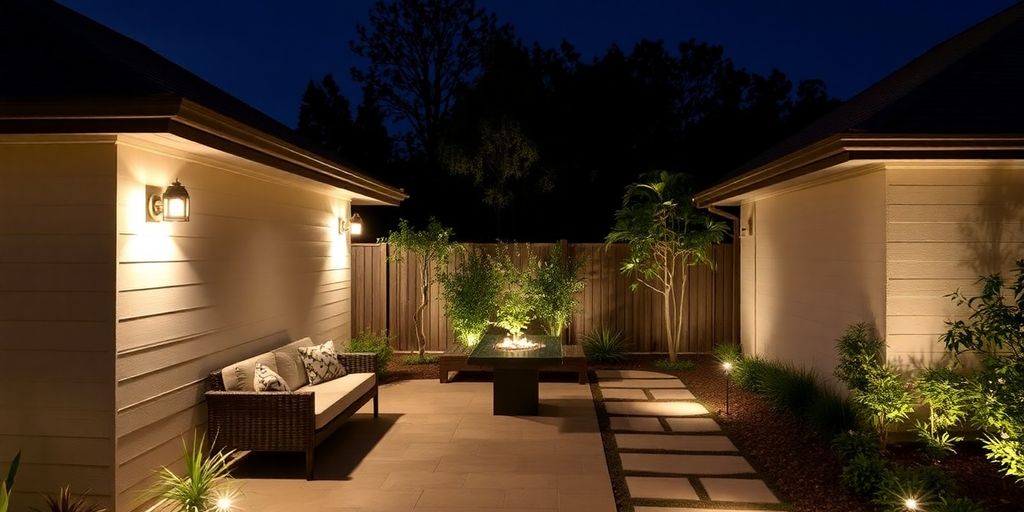Choosing the right materials for your patio, veranda, or carport construction project can be a daunting task. Two popular options include Colourbond steel and timber, each with its own unique characteristics.
This guide delves into their pros and cons in terms of customisation, sustainability, lifespan, and more, providing you with the information you need to make an informed choice. As you explore these options, consider One Stop Patio Shop, your trusted patio builder Perth company that offers quality products and services for all your construction needs.
What is Colourbond?
Before we get into the pros and cons of Colourbond vs timber, it’s important to understand exactly what Colourbond is. Colourbond is a brand of steel that is commonly used in Australia for a variety of construction purposes. It’s coated with a durable, baked-on paint finish, and is known for its strength and long-lasting performance. It’s available in a range of colours and finishes, making it highly versatile for different design aesthetics.
Colourbond steel is often used for roofing, walling, guttering, and fencing, as well as for other outdoor structures like patios, verandas, and carports. It’s known for being resistant to chipping, peeling, and cracking, making it a durable choice in a variety of weather conditions. Its heat-reflective qualities also make it a popular choice in warmer climates.
Colourbond steel vs timber
Deciding between Colourbond steel and timber for your construction project? In this guide, we compare these materials across various factors like customisation, sustainability, lifespan, and more, to help you make an informed choice. Let’s dive in!
Customisation and design flexibility
Let’s dig into the nitty-gritty of design flexibility with Colourbond steel and timber. They both pack a punch when it comes to customisation. Need something to match your home style or personal taste? No worries! Both offer great options.
Colourbond steel
Colourbond steel offers a wide range of colours, finishes, and profiles, providing extensive design flexibility. It can be easily tailored to match your home’s architectural style or personal preferences. Colourbond steel is also versatile in terms of shape and size, allowing for customised designs and configurations.
Timber
Timber is highly versatile and can be easily cut, shaped, and modified to achieve unique designs and architectural styles. It offers flexibility in terms of size, allowing for customised structures that complement your home’s aesthetics. Timber can be stained, painted, or left untreated to achieve different visual effects.
Verdict
Both Colourbond steel and timber offer customisation and design flexibility. Colourbond steel provides a range of colour options and profiles, while timber allows for greater artistic freedom in terms of shaping and finishes.
Environmental sustainability
Next up, let’s talk about how green Colourbond steel and timber are. Both have some serious eco-credentials to brag about. Colourbond steel is recyclable and energy-efficient, while timber is a renewable resource that helps to lock away carbon. So, let’s see how they stack up in helping you and the planet stay a bit greener.
Colourbond steel
Colourbond steel is made from recyclable materials and is itself fully recyclable. It has a long lifespan, reducing the need for replacement and minimising waste. Additionally, Colourbond steel is energy-efficient as it reflects heat, reducing cooling requirements during hot Australian summers. It is also worth noting that Colourbond steel is a non-combustible material, which is beneficial in bushfire-prone areas.
Timber
Timber is a renewable resource, provided it is sourced from sustainable forests or managed plantations. Using timber in construction contributes to carbon sequestration, helping to reduce greenhouse gas emissions. However, it is important to choose timber that is certified by reputable organisations. At One Stop Patio Shop, we have a deep appreciation for timber. We ensure to source only the finest sustainable plantation timber from within Australia (just like all our products) for our wide variety of hardwood products.
Verdict
Both Colourbond steel and timber have environmental benefits. Colourbond steel is recyclable, energy-efficient, and non-combustible, while timber is a renewable resource that aids in carbon sequestration when sourced responsibly.
Maintenance and lifespan
We all want materials that last long and don’t take our entire weekends to maintain, right? Colourbond steel is low-maintenance and super durable. Timber, on the other hand, needs a bit more TLC to keep it in top shape. Let’s dive into the details.
Colourbond steel
Colourbond steel requires minimal maintenance compared to timber. It is resistant to rot, termites, and warping. Routine cleaning with water and mild detergent is usually sufficient to keep it looking its best. With proper care, Colourbond steel can have a lifespan of several decades.
Timber
Timber requires regular maintenance to ensure its longevity. It needs to be protected from moisture, pests, and sun damage through regular sealing, staining, or painting. Failure to maintain timber structures can result in rot, decay, and diminished lifespan. On average, well-maintained timber structures can last for several decades.
Verd ict
Colourbond steel has a lower maintenance requirement and longer lifespan compared to timber. It is a durable material that requires minimal upkeep, making it a convenient choice for those seeking low-maintenance outdoor structures.
Fire resistance
Let’s turn up the heat and discuss fire resistance. If you’re in a bushfire-prone area, this is crucial. Colourbond steel doesn’t burn, making it a great fire-resistant option. Timber, though, can catch fire and needs treatments to help it resist flames. Let’s dig into the details.
Colourbond steel
Colourbond steel is non-combustible, making it highly resistant to fire. This is particularly advantageous in areas prone to bushfires, as it can help protect your patio, veranda, or carport from the spread of flames.
Timber
Timber is a combustible material and is susceptible to fire. While some fire-resistant treatments are available, they require periodic reapplication and may not provide the same level of protection as non-combustible materials like Colourbond steel.
Verdict
Colourbond steel offers superior fire resistance compared to timber, making it a safer choice for areas at risk of bushfires.
Installation and construction
Time to talk about installation and construction. Colourbond steel is a breeze to install, saving you time and bucks. On the flip side, timber takes more time and craftsmanship, but if you’re after a traditional look, it’s worth considering. Let’s break it down further.
Colourbond steel
Colourbond steel structures are generally quicker and easier to install compared to timber, due to their prefabricated nature. This can significantly reduce construction times and labour costs. Moreover, Colourbond steel is lightweight yet robust, making it easy to handle and construct.
Timber
Timber construction requires skilled workmanship and can be more time-consuming compared to Colourbond steel. However, the organic and traditional aesthetics of timber construction can be a valuable addition to your home. The installation process involves cutting, shaping, and joining timber pieces, which could extend construction time.
Verdict
Colourbond steel offers faster and more cost-effective installation, while timber might provide a more artisanal look but requires more time and skilled workmanship.
Noise reduction
Both Colourbond steel and timber offer ways to help keep the peace and quiet. Colourbond steel is solid and dense, which is great for blocking out noise. Timber absorbs sound waves thanks to its porous nature. Let’s dive into what this means for you.
Colourbond steel
Colourbond steel, due to its solid and dense nature, can provide excellent noise reduction qualities. It is capable of blocking out a significant amount of external noise, making it a good choice for urban areas or homes near busy roads.
Timber
Timber also has natural acoustic properties that can help to dampen sounds. It has a porous structure that absorbs sound waves, making it effective at reducing noise transmission. However, the level of noise reduction can vary depending on the type and thickness of the timber used.
Verdict
Both Colourbond steel and timber can effectively reduce noise. The choice between the two would depend on your specific needs and preferences.
Thermal performance
Next, let’s consider thermal performance. This affects how cool or warm your space stays. Colourbond steel reflects heat, which can be great for keeping cooling costs down. But, without insulation, it could let heat or cold in. Timber, on the other hand, naturally insulates well. Let’s look closer at these aspects.
Colourbond steel
Colourbond steel has a reflective surface that can be beneficial in reducing heat absorption and consequently, cooling costs, especially in hot climates. However, steel is a conductor of heat, which means that without proper insulation, it could potentially transmit heat or cold into your home from the outside environment.
Timber
Timber has natural insulating properties. It can help to reduce energy costs by keeping your space warmer in winter and cooler in summer. The level of insulation provided by timber depends on its thickness and type, with some species offering better insulation than others.
Verdict
Timber might offer better natural insulation compared to Colourbond steel. However, with proper insulation, both materials can provide good thermal performance.
Resilience to weather conditions
Now, let’s chat about how well Colourbond steel and timber stand up to weather. Living in Perth, with its extremely harsh climates, this is key. Colourbond steel is a tough cookie—it resists rust and can handle heavy wind, rain, and sunlight. Timber can be durable too, but needs more care to keep it looking good and lasting long against the elements. Let’s get into the details.
Colourbond steel
Colourbond steel is extremely durable and resistant to various weather conditions. It is rust-resistant and can withstand high winds, heavy rains, and extreme sunlight. This makes it an excellent choice for areas with harsh climatic conditions like Perth.
Timber
While timber can be durable, its longevity and appearance are more significantly affected by weather conditions. Excessive exposure to water can lead to rot and warp, while too much sun can cause cracking or fading. Regular maintenance is necessary to protect the timber from the elements.
Verdict
Colourbond steel has greater resilience to harsh weather conditions compared to timber and requires less maintenance in this regard.
If you’re concerned about the harsh Perth sun beaming down on your property and structures consider investing in SolarSpan. One Stop Patio Shop is a leader in the SolarSpan patio builder in Perth market.
Final thoughts
Colourbond steel and timber both have distinct strengths. Colourbond excels in durability, maintenance, fire resistance, and ease of installation, whereas timber provides a natural aesthetic, insulation, and sound absorption. However, it requires more upkeep and has lower fire and weather resistance.
Selecting the right material is essential for a long-lasting patio, veranda, or carport. As carport, veranda, and patios Perth experts, One Stop Patio Shop offers both these options, meeting a variety of preferences. Get in touch with us today to explore our offerings and start building your dream outdoor space.



